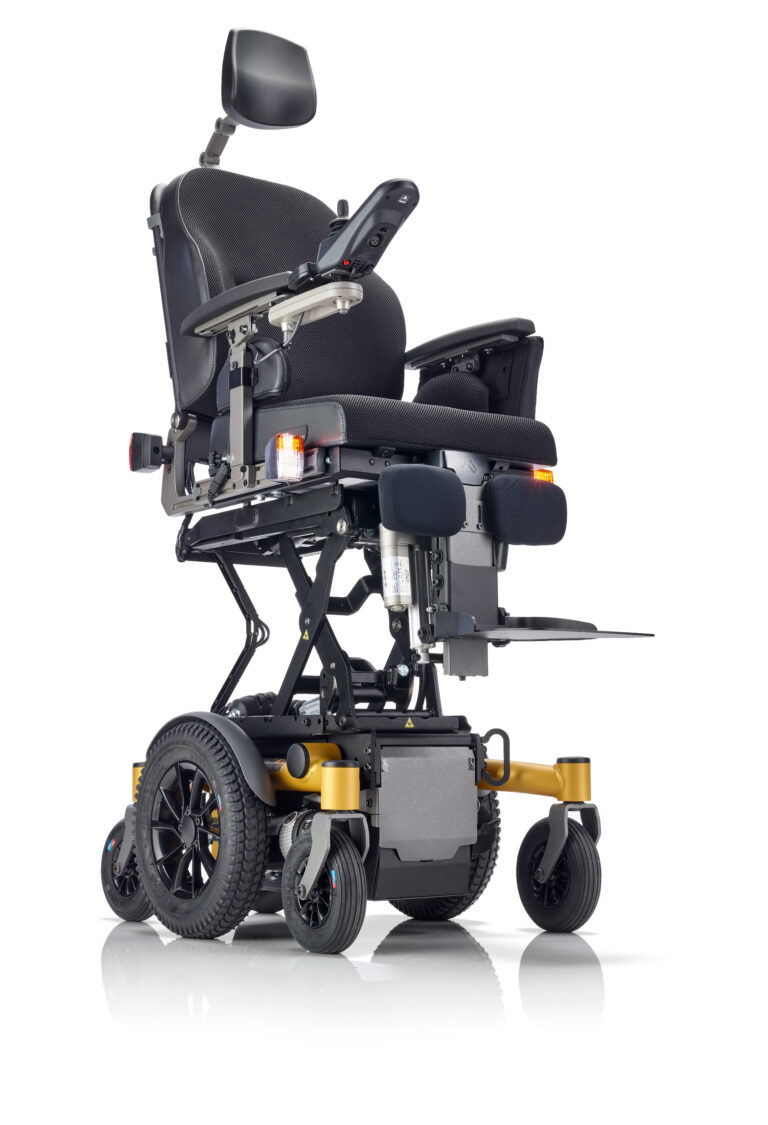Electric wheelchairs (or ‘power chairs’) are designed to manoeuvre through a variety of conditions and thereby providing users with accessibility to everyday activities they might otherwise struggle with. Every electric wheelchair is made up of identical basic components (a frame with a power base, seat and user controls for operation). However, the design can vary a great deal depending on whether it is for use indoors or outdoors — from the light and compact models to the bulky, heavier chairs with large and durable tyres fit for different surfaces.
This article focuses on the indoor/outdoor distinction and how indoor wheelchairs are designed to operate. Read on to see whether this model is right for your particular needs.
Indoor electric wheelchairs
An indoor electric wheelchair is made to be manoeuvred with ease. They are narrow and typically built with mid-wheel drive, like the SANGO slimline, which have a smaller turning circle or ‘radius’. This lets users turn tight corners, navigate narrow hallways and doorways, and get into small rooms like the bathroom, toilet or laundry room.
These models will be perfect for travelling down the street to the shops or making other shorter journeys. Indoor electric wheelchairs will not have as many additional features as their outdoor counterparts, and are made to be lighter and more nimble so that they can be carried more easily.

Design features
Size
Indoor wheelchairs are inevitably smaller than outdoor models. When moving inside the house, the wheelchair does not have to move that fast, although the users should be comfortable and confident in navigating confined spaces. With a smaller and compact model, an indoor electric chair will therefore be able to fit through narrow halls, doorways and the like.
Some smaller models can also be folded or partly dismantled so that they can, for example, be loaded into a car boot or other vehicle space. The front height will also affect the general usability of the chair at certain points, for instance, under a table or desk — sitting at these positions will require low fronts and adjustable armrests.
Wheel
The number of wheels can vary between different wheelchair chassis types, as we explain in a separate article: front-wheel drive (FWD) mid-wheel drive and rear-wheel drive, each having their own perks. FWD and MWD are better suited for indoors, with the latter featuring an extremely small turning circle for peak maneouvrability.
Battery
Indoor electric wheelchairs generally require less power than their outdoor counterparts, since the journey distances are much shorter — plus there are no hills inside, so the chair motor does not have to deal with inclines or rough terrain.
Final thoughts
Making the right indoor wheelchair choice can be difficult, but hopefully this guide has helped explain a key difference between indoor and outdoor chairs that can help prospective buyers choose the right chair. In finding the right model, it’s good to consider your personal lifestyle and physical abilities. If you don’t have the biggest budget, you can look into modifying your existing chair if you are already an owner.
You should also research insurance information when figuring out your budget. Our supply professionals are always happy to offer advice and answer any questions you may have — get in touch and see how we can support you.



